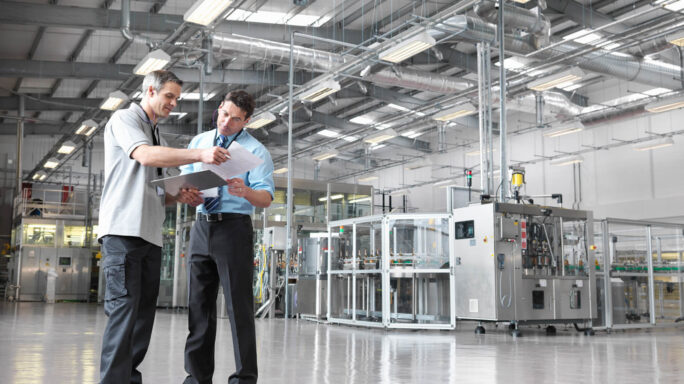Technology & Innovation
Understanding the latest chemical manufacturing industry trends
What are the latest chemical manufacturing industry trends? You need to understand that your industry and where digital transformation fits in.

What are the latest chemical manufacturing industry trends?
On the surface, it might be business as usual in chemical manufacturing and distribution. If you’ve been working in this space for some time, you may have seen your business work comparatively conservatively in the face of disruption, technology, and fourth industrial revolution (Industry 4.0) compared to companies in other industries.
Many chemical businesses have been doing fine. Factors such as the economic growth of China and other emerging countries may have played a part in this, as they’ve had to import to meet demand at home, giving exporters the advantage.
And intrinsically, chemical products are necessary for the world to function – we use them in all sorts of ways – food, healthcare, utilities, construction – which means there is continual demand from different types of customers.
But dig a little deeper, and there may be a few clouds on the horizon and challenges to come. Factors you need to watch out for as a chemical manufacturer include:
- Static productivity and the threat of margins are being squeezed ever tighter.
- Economic trends, such as the rapid growth driven by emerging countries slowing down. You may also have to deal with exchange volatility, climate change factors, and shifting demand patterns.
- Increasing customer expectations, where the customization of products across multiple channels is becoming an expectation rather than the outlier.
- Increasing competition in your markets, whether that’s through the growth of established players or new entrants.
Chemical manufacturers will understand that there not necessarily under threat from imminent disruptive forces, but there is a threat of slow death – a gradual deterioration of performance and stagnation where new entrants could get the upper hand.
You need to understand that your industry can quickly change – and why new capabilities and digital transformation could prepare you to innovate for what’s ahead.
What are the trends you need to watch?
Digital technology has the potential to impact your chemical manufacturing business massively, but you must understand some of the trends which are changing your industry to prepare for them.
1. The circular economy
The circular economy is a system that looks to eliminate waste and the continual use of resources. As opposed to a traditional linear economy in which we make, consume and throw away, the circular economy is all about creating a circle where we design out waste and pollution by keeping products and materials in use for as long as possible and finding ways to create new resources from what we discard.
Businesses in the chemical industry will need to focus on reducing the environmental impact of the products they create, making sure there are ways to recover and regenerate these products when you throw them away. Both regulatory and consume pressure will mean that you will need to find ways to recycle materials through the value chain for reuse, or substitute products that have a better ecological footprint. It might mean a complete rethink in the way you design chemicals.
2. 3D printing
Through the digital transformation of chemical manufacturing, there’s a transformation in how products are made, enabled by many digital technologies coming into use at the same time, bound by the connectivity of people, processes, and equipment.
One example of this is 3D printing, which allows you to customize and personalize chemical manufacturing products. You could streamline processes, accelerate the design phase, quicken processes, and get products to the market quicker. 3D printing lets you create prototypes through onsite printing, while you can even build manufacturing tools like containers quickly and cheapy
Chemical businesses can create new business and operating models, as 3D printing allows you to print products from anywhere around the world, reducing waste and decreasing the need for outsourcing the manufacture of products.3. The internet of things, analytics, and predictive maintenance
Computing power and advanced analytics allow you to take advantage of intelligence and put data to work – by gathering data from multiple sources through factory machinery and devices connected to the internet of things. With the information you collect, you can gain a thorough understanding of what’s happening in your factory, through full insight into your operations. You’ll be able to understand, for instance, where your unprofitable production lines are and whether you’re suffering from hidden bottlenecks.
Predictive analytics could be particularly transformative, as it allows you to analyze the historical performance of machinery to forecast when it might be likely to fail, to limit downtime, and to identify the cause of the problem. You could also review devices to make sure they are operating as efficiently as possible.
How to seize your digital transformation opportunities
With the manufacturing world in the grip of both technological and economic disruption, you should take a long look at what products you’re making, what services you are and could offer, and whether your business models need to change to serve your customers better.
Here are a few pointers when it comes to digitizing your chemical business.
- Set achievable goals. You’ll need to research and identify the opportunities when it comes to digital disruption, innovation, and the circular economy, understanding how it fits into your business and how it fits into your corporate strategy.
- Change the culture. For you to successfully incorporate new business models like digitization and the circular economy, you’ll need to pick up some lessons from how start-ups work – with innovation cycles needing to be short, you need to be able to work in an agile way. But it’s also about collaboration – you will need to close company silos and get different departments working together to be most effective.
- Invest in your people. Digitization and the circular economy will need people with the right skillsets to make your initiatives bloom. Skilling up internal employees is a cost-efficient way to develop knowledge inside your business, but recruitment may be necessary to take advantage of growth opportunities. The right talent can be hard to find, so you may need to work in showing that chemical manufacturing is a great industry to work in.
- Build an ecosystem of partners. You can’t go it alone with a digital transformation program. To take advantage of opportunities, you’ll need to find the right partners and develop the right connections to share knowledge.
- Assess digital maturity and identify the gaps. Find ways to plot your organizational maturity, which will guide where you need to elevate your digital capabilities. Analyze how you can drive a digital culture, how you can organize and pull the resource to do this, and how you can invest and take advantage of customer-driven insight to steer where you need to go.
- Invest in core systems with a clear ROI. Digital transformation will come with significant expenses. It’s necessary to make sure that investments made in hardware and software show return on investment when it comes to the cost savings made when it comes to the productivity benefits and cutting down of inefficiencies from investment in new systems.







Ask the author a question or share your advice